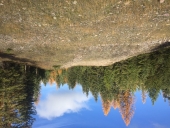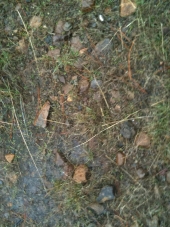posted 1 year ago
Hey y'all,
I'm looking at land, about to sign a contract after which I'll get a soil survey (or sample, tips are appreciated actually but not the point of the post). The plot was quarried for soapstone, which at first I was hyped about since it meant a higher likelihood we could swim after other tests/cleanup. Then I learned that quarrying soapstone creates dust that adds magnesium to the soil, and there's a native grassland on site in the power line easement that thrives in the magnesium high, high-pH soil. This is only a section, however, of the plot, which has a lot of 15 year old pine and assorted hardwood densely planted and covered in brambles (i.e., paradise). Obviously the soil test will tell a lot, and I'm planning on driving out there next week with white vinegar. I've found that gypsum is a potential solution, though I'm hesitant to try and fix this in any way other than building up organic matter in the soil with mulch and compost (the soil is mostly Spriggs silt loam, 15 to 25 percent slope).
Now. It's come to my attention that I have stumbled upon a quarry that includes what is likely a rare ultramafic woodlands/barrens ecosystem, a particularly nutrient-poor site. Without getting into the whole permaculture vs. ecosystem restoration debate, am I an idiot for even considering trying to start a forest garden here? Is magnesium toxicity the doom of almost anything I plant, especially given the clay subsoil? Is it I'm led to understand magnesium-high soils like this one are somewhat rare, and I can't find anything on growing near serpentine or soapstone.
Thanks!







